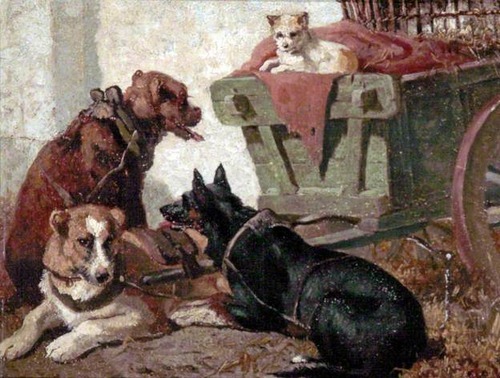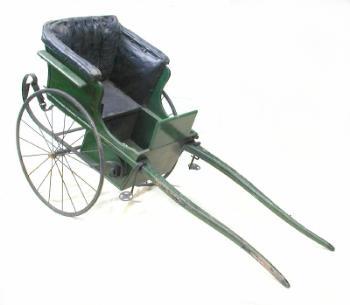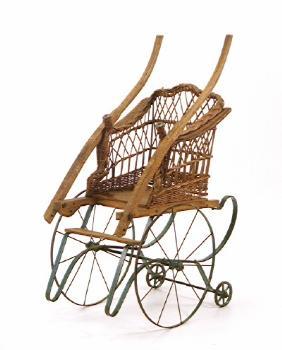Dog Carts: Travel in style
Written by Adam Koszary, Project Officer.
In my mind the idea of a dog cart is fairly funny. The idea of, say, a Pug or a French Bulldog pulling along bespoke, miniature carts is absurd, endearing and yet a little unsettling, like performing animals at the zoo.
They are also some of my favourite objects at MERL. Nothing else has confronted me so immediately with its oddity: when did we use dogs as draught animals? Why was that okay? Who made these carts, and who used them?

It is the ethical issues, however, that I enjoy the most. Why is it one rule for one animal and a different one for another? Docking dog tails is restricted or banned in most countries, but it’s fine for sheep. Is it hypocritical to think of dog carts as cruelty to animals when we still use horses and oxen to pull carts?

The Victorians were the first to take issue with it, originally banning it in 1839 through the Metropolitan Police Act, which forbade the use of dog carts within fifteen miles of Charing Cross. As well as being thought of as cruel to animals it was thought that overworked dogs were more susceptible to rabies, cases of which did indeed drop by 1841. It was also in that year that dog-carts were banned across the United Kingdom. It did not pass unopposed, although most arguments against it were concerned with the effect it would have on small traders, who used dog carts as a cheaper way of transporting goods. Indeed, some of the opposition ridiculed the ‘trivial’ bill, saying that if small animals should not draw carts then Shetland ponies should also be banned. (And considering that 1841 was the same year in which the Abolition of Slavery Act was passed, they may have had a point.)

The Act for the prevention of Cruelty to Animals has since been updated without mention of using dogs for draught purposes so I’m not sure if it even is illegal anymore. Perhaps it’s simply because it would be such a rare occurrence for someone in the modern age to construct a cart and conscript a canine that it is pointless to legislate against.
A google, however, reveals that dog carts are still sold in the USA. So if you want to be driven around by a dog for some reason, try there. Just don’t use ours.


Interesting post – thank you. The term ‘dogcart’ was also used to describe a sporting horse-drawn vehicle with a compartment at the front in which dogs could travel – there are many references in c.19th novels e.g. ch 7 of Hardy’s ‘Tess of the D’Urbervilles’ where her seducer Alec D’Urberville appears in a dogcart:
‘… the second vehicle was not a humble conveyance like the first, but a spick-and-span gig or dog-cart, highly varnished and equipped.’
I came across this article while browsing the net. The Metropolitan Police Act Ban on Dog Carts resulted in the death of thousands of draught Dogs in the London Area as simple economics meant that they could no longer earn their keep and the owners could not afford to keep them. Reports at the time mention the amount of dead dogs dumped in the Thames. The sudden reduction in the Dog Population as a result of the ban could easily be argued as the cause for the reduction in cases of Rabies. Interestingly the campaign at the time to ban dog carts has been cited as the birth of the RSPCA in England, Strange that the birth of such an organisation brought about the death of so many animals.
Whilst no longer used commercially, dog carts are still manufactured and used throughout the U.K. for recreational activity by owners of large “Draught” breeds of dogs such as the Newfoundland & Bernese. Their use provides mental stimulus and valuable exercise for breeds whose reason for existence was a poor mans need for a cheap alternative to the horse.